-
 Eliza Ballou Garfield gave birth to James Garfield on this date.
Eliza Ballou Garfield gave birth to James Garfield on this date. -
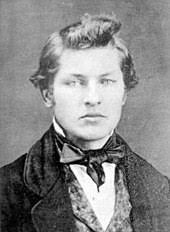 James A. Garfield was in college for 3 years from 1851 to 1854.
James A. Garfield was in college for 3 years from 1851 to 1854. -
 James Garfield was married to Lucerita Garfield. They got married on November 11, 1858
James Garfield was married to Lucerita Garfield. They got married on November 11, 1858 -
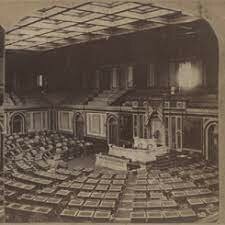 James Garfield. Served nine terms in the United States House of Representatives and was the only sitting member of the House to be elected president.
James Garfield. Served nine terms in the United States House of Representatives and was the only sitting member of the House to be elected president. -
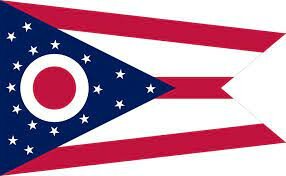 Garfield was elected to the Ohio Senate. As a senator, he advocated for forcing Southern states who had seceded to rejoin the Union.
Garfield was elected to the Ohio Senate. As a senator, he advocated for forcing Southern states who had seceded to rejoin the Union. -
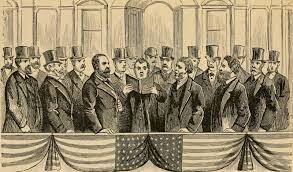 James Garfield was a lawyer and Civil War general, he served nine terms in the United States House of Representatives and was the only sitting member of the House to be elected president.
James Garfield was a lawyer and Civil War general, he served nine terms in the United States House of Representatives and was the only sitting member of the House to be elected president. -
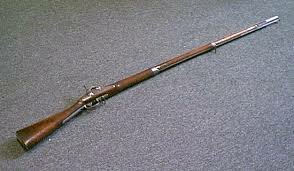 a trip to Illinois to purchase muskets, Garfield returned to Ohio and, in August 1861, received a commission as a colonel in the 42nd Ohio Infantry regiment. The 42nd Ohio existed only on paper, so Garfield's first task was to fill its ranks.
a trip to Illinois to purchase muskets, Garfield returned to Ohio and, in August 1861, received a commission as a colonel in the 42nd Ohio Infantry regiment. The 42nd Ohio existed only on paper, so Garfield's first task was to fill its ranks. -
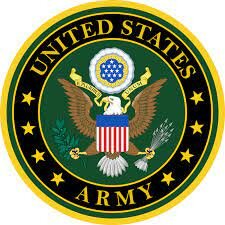 James Garfield was a Major general. He was the 42nd Ohio Volunteer Infantry 20th Brigade, 6th Division, Army of the Ohio. He fought in the American Civil War Battle of Middle Creek Battle of Shiloh Siege of Corinth Tullahoma Campaign Battle of Chickamauga.
James Garfield was a Major general. He was the 42nd Ohio Volunteer Infantry 20th Brigade, 6th Division, Army of the Ohio. He fought in the American Civil War Battle of Middle Creek Battle of Shiloh Siege of Corinth Tullahoma Campaign Battle of Chickamauga. -
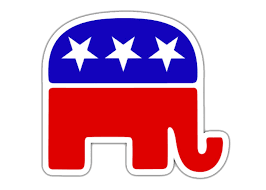 James Garfield was a part of the republican party.in 1862, Ohioans elected him to Congress. President Lincoln persuaded him to resign his commission: It was easier to find major generals than to obtain effective Republicans for Congress. Garfield repeatedly won re-election for 18 years, and became the leading Republican in the House
James Garfield was a part of the republican party.in 1862, Ohioans elected him to Congress. President Lincoln persuaded him to resign his commission: It was easier to find major generals than to obtain effective Republicans for Congress. Garfield repeatedly won re-election for 18 years, and became the leading Republican in the House -
 Their first kid was harry Augustus Garfield was the first kid of James Garfield and lead the U.S. Fuel Administration for President Woodrow Wilson during Word War I.
Their first kid was harry Augustus Garfield was the first kid of James Garfield and lead the U.S. Fuel Administration for President Woodrow Wilson during Word War I. -
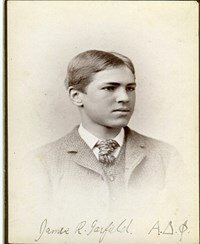 James Garfield had another child 2 years after Harry Garfield. His name was James Rudolph .Garfield and he was an American lawyer and politician. He served as Secretary of the Interior during President Theodore Roosevelt's administration.
James Garfield had another child 2 years after Harry Garfield. His name was James Rudolph .Garfield and he was an American lawyer and politician. He served as Secretary of the Interior during President Theodore Roosevelt's administration. -
 Mary "Mollie" Garfield. Mollie was educated by her parents. She started to learn French at the age of five. In 1876, when Mollie was nine, an English governess named Martha Mays became a part of the Garfield household. She taught Mollie French, Latin, mathematics, and English. “Aunt Patty” Mays was also a companion and chaperone for the young Garfield's. At age twelve, Mollie began to attend Madame Burr’s School on New York Avenue in Washington.
Mary "Mollie" Garfield. Mollie was educated by her parents. She started to learn French at the age of five. In 1876, when Mollie was nine, an English governess named Martha Mays became a part of the Garfield household. She taught Mollie French, Latin, mathematics, and English. “Aunt Patty” Mays was also a companion and chaperone for the young Garfield's. At age twelve, Mollie began to attend Madame Burr’s School on New York Avenue in Washington. -
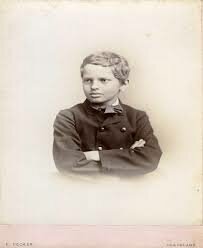 Irvin Garfield. Irvin attended Williams College in Massachusetts, just like his father and brothers. Irvin also attended Harvard Law School and worked at the firm in Cleveland called Garfield and Garfield. He was a career American army officer. He is best known for his defeat in the First Battle of Bull Run, the first large-scale battle of the American Civil War. In 1862, he was given command of the I Corps of the Army of the Potomac.
Irvin Garfield. Irvin attended Williams College in Massachusetts, just like his father and brothers. Irvin also attended Harvard Law School and worked at the firm in Cleveland called Garfield and Garfield. He was a career American army officer. He is best known for his defeat in the First Battle of Bull Run, the first large-scale battle of the American Civil War. In 1862, he was given command of the I Corps of the Army of the Potomac. -
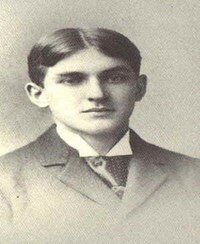 Abram Garfield was the youngest son of President and Mrs. James A. Garfield. He became one of the premier Cleveland, Ohio architects
Abram Garfield was the youngest son of President and Mrs. James A. Garfield. He became one of the premier Cleveland, Ohio architects -
 James Garfield was elected to office on march 4, 1881. He is also the 20th president of the united states.
James Garfield was elected to office on march 4, 1881. He is also the 20th president of the united states. -
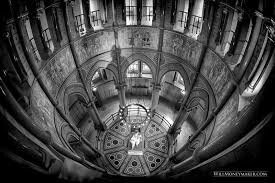 Garfield's accomplishments as president included his resurgence of presidential authority against senatorial courtesy in executive appointments, a purge of corruption in the Post Office, and his appointment of a Supreme Court justice.
Garfield's accomplishments as president included his resurgence of presidential authority against senatorial courtesy in executive appointments, a purge of corruption in the Post Office, and his appointment of a Supreme Court justice. -
 Garfield completes his slate of cabinet members, naming James G. Blaine as Secretary of State and Abraham Lincoln's son, Robert, as Secretary of War. Garfield angers Conkling with his nomination of William Windom of Minnesota, a non-Eastern man, as Secretary of Treasury. Further, Garfield denies Conkling influence in New York politics by appointing William H. Robertson as collector of the port of New York and Thomas L. James postmaster of New York.
Garfield completes his slate of cabinet members, naming James G. Blaine as Secretary of State and Abraham Lincoln's son, Robert, as Secretary of War. Garfield angers Conkling with his nomination of William Windom of Minnesota, a non-Eastern man, as Secretary of Treasury. Further, Garfield denies Conkling influence in New York politics by appointing William H. Robertson as collector of the port of New York and Thomas L. James postmaster of New York. -
 Garfield sends his list of nominations to the Senate, which includes New York senator Conkling's contingent. Conkling will continue to be a source of conflict for the President.
Garfield sends his list of nominations to the Senate, which includes New York senator Conkling's contingent. Conkling will continue to be a source of conflict for the President. -
 Garfield removes E. A. Meritt from the collectorship of the New York Customhouse after Conkling feels assured that the President would not make any such changes. Garfield then sends W. H. Robertson's name to the Senate as his replacement, intensifying the struggle between Garfield and Conkling.
Garfield removes E. A. Meritt from the collectorship of the New York Customhouse after Conkling feels assured that the President would not make any such changes. Garfield then sends W. H. Robertson's name to the Senate as his replacement, intensifying the struggle between Garfield and Conkling. -
 A Democratic filibuster, which ties up the Senate beginning March 23, ends when Garfield agrees to remove certain appointments. The end of the filibuster allows Garfield to push for Robertson's confirmation to the New York Customhouse. Earlier, Senator Conkling threatens to publish the Hubbell letter, which appears to link Garfield to the Star Route Scandal, a scheme to skim money from the U.S. Post Office.
A Democratic filibuster, which ties up the Senate beginning March 23, ends when Garfield agrees to remove certain appointments. The end of the filibuster allows Garfield to push for Robertson's confirmation to the New York Customhouse. Earlier, Senator Conkling threatens to publish the Hubbell letter, which appears to link Garfield to the Star Route Scandal, a scheme to skim money from the U.S. Post Office. -
 On the eve of the senatorial vote on the New York nominees, Garfield learns that Conkling intends to delay action on other nominees and moves for adjournment before Robertson can be considered. Garfield removes all of his nominations with the exception of Robertson.
On the eve of the senatorial vote on the New York nominees, Garfield learns that Conkling intends to delay action on other nominees and moves for adjournment before Robertson can be considered. Garfield removes all of his nominations with the exception of Robertson. -
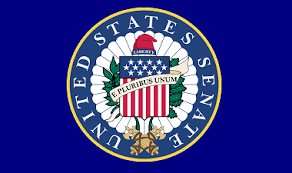 New York senators Roscoe Conkling and Tom Platt resign to protest Garfield's removal of New York nominees to secure Robertson's confirmation.
New York senators Roscoe Conkling and Tom Platt resign to protest Garfield's removal of New York nominees to secure Robertson's confirmation. -
 The Senate confirms Robertson as collector of customs for the port of New York.
The Senate confirms Robertson as collector of customs for the port of New York. -
 Clara Barton organizes the American Association of the Red Cross, modeled after the International Red Cross, in Washington, D.C. Barton serves as the organization's volunteer president until 1904.
Clara Barton organizes the American Association of the Red Cross, modeled after the International Red Cross, in Washington, D.C. Barton serves as the organization's volunteer president until 1904. -
 President Garfield is shot in a D.C. train station by Charles Julius Guiteau, an unstable Stalwart attorney who had been denied a consular post. “I am a stalwart,” Guiteau proclaims. “Arthur is now President of the United States.”
President Garfield is shot in a D.C. train station by Charles Julius Guiteau, an unstable Stalwart attorney who had been denied a consular post. “I am a stalwart,” Guiteau proclaims. “Arthur is now President of the United States.” -
 Established in 1880, the Normal School for Colored Teachers, now Tuskegee University, officially opens its doors in Tuskegee, Alabama. Dr. Booker T. Washington serves as the school's first president.
Established in 1880, the Normal School for Colored Teachers, now Tuskegee University, officially opens its doors in Tuskegee, Alabama. Dr. Booker T. Washington serves as the school's first president. -
 Jame Garfield died of a ruptured splenic artery aneurysm, following sepsis and bronchial pneumonia
Jame Garfield died of a ruptured splenic artery aneurysm, following sepsis and bronchial pneumonia -
 James Garfield dies from blood poisoning and complications after surgeons search endlessly to find the lost bullet in his back, lodged in his pancreas. Vice President Chester A. Arthur becomes the twenty-first President of the United States The assassin, Guiteau, will be hanged on June 30, 1882.
James Garfield dies from blood poisoning and complications after surgeons search endlessly to find the lost bullet in his back, lodged in his pancreas. Vice President Chester A. Arthur becomes the twenty-first President of the United States The assassin, Guiteau, will be hanged on June 30, 1882. -
 James Garfield left office when he died
James Garfield left office when he died -
 James Garfield's assassination was instrumental to the passage of the Pendleton Civil Service Reform Act on January 16, 1883. Garfield himself had called for civil service reform in his inaugural address and supported it as president in the belief that it would make government more efficient.
James Garfield's assassination was instrumental to the passage of the Pendleton Civil Service Reform Act on January 16, 1883. Garfield himself had called for civil service reform in his inaugural address and supported it as president in the belief that it would make government more efficient.
